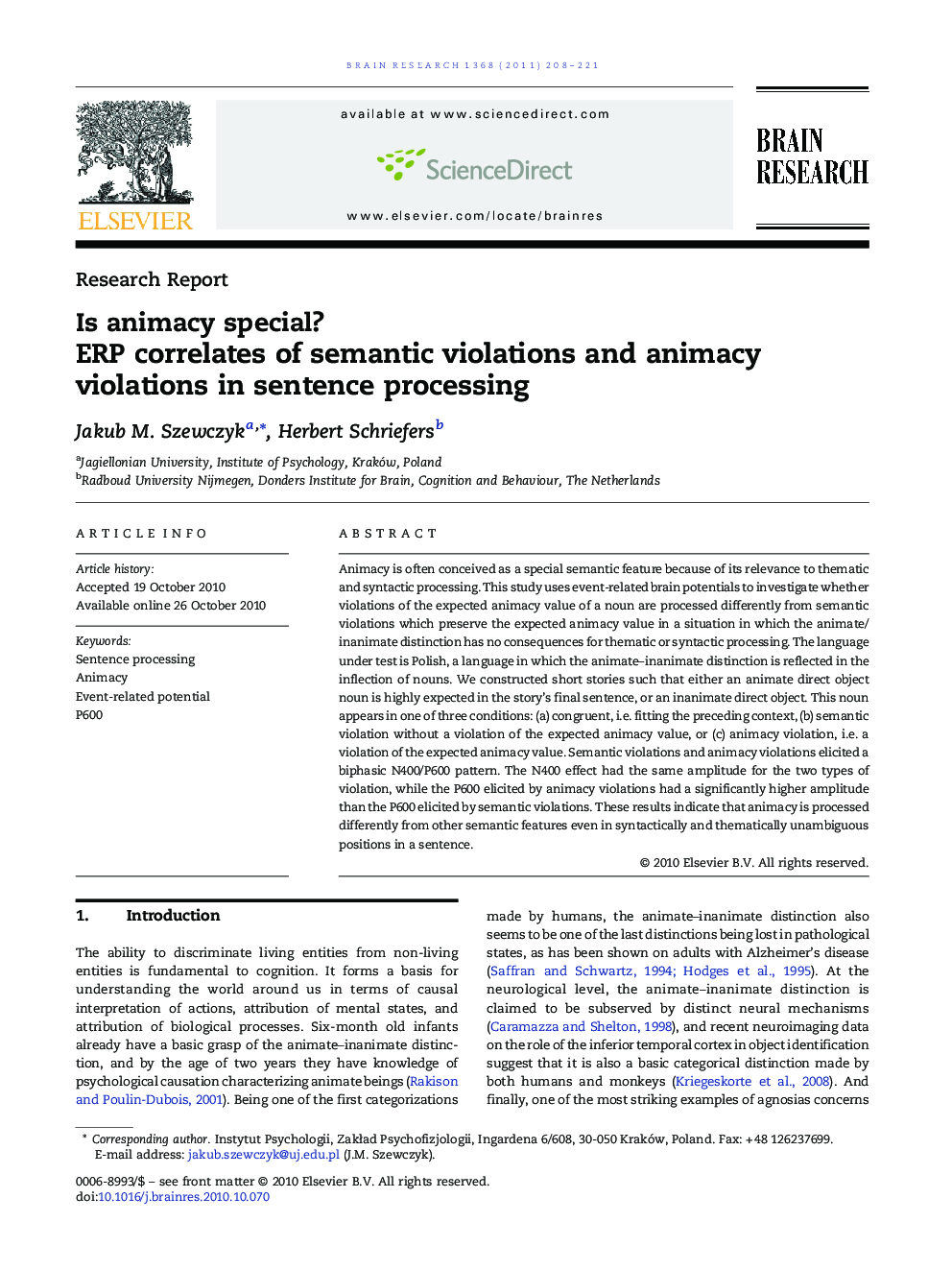| Article ID | Journal | Published Year | Pages | File Type |
|---|---|---|---|---|
| 4326222 | Brain Research | 2011 | 14 Pages |
Animacy is often conceived as a special semantic feature because of its relevance to thematic and syntactic processing. This study uses event-related brain potentials to investigate whether violations of the expected animacy value of a noun are processed differently from semantic violations which preserve the expected animacy value in a situation in which the animate/inanimate distinction has no consequences for thematic or syntactic processing. The language under test is Polish, a language in which the animate–inanimate distinction is reflected in the inflection of nouns. We constructed short stories such that either an animate direct object noun is highly expected in the story's final sentence, or an inanimate direct object. This noun appears in one of three conditions: (a) congruent, i.e. fitting the preceding context, (b) semantic violation without a violation of the expected animacy value, or (c) animacy violation, i.e. a violation of the expected animacy value. Semantic violations and animacy violations elicited a biphasic N400/P600 pattern. The N400 effect had the same amplitude for the two types of violation, while the P600 elicited by animacy violations had a significantly higher amplitude than the P600 elicited by semantic violations. These results indicate that animacy is processed differently from other semantic features even in syntactically and thematically unambiguous positions in a sentence.
Research highlights►In long discourse contexts, all semantic violations lead to N400 and P600 components. ►Semantic violations involving animacy violations lead to an elevated P600 component. ►This happens even when animacy does not play any role for syntactic parsing. ►Subjective plausibility of animacy violations cannot explain the effect.
